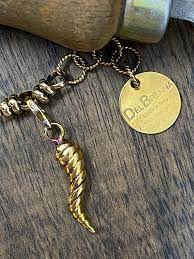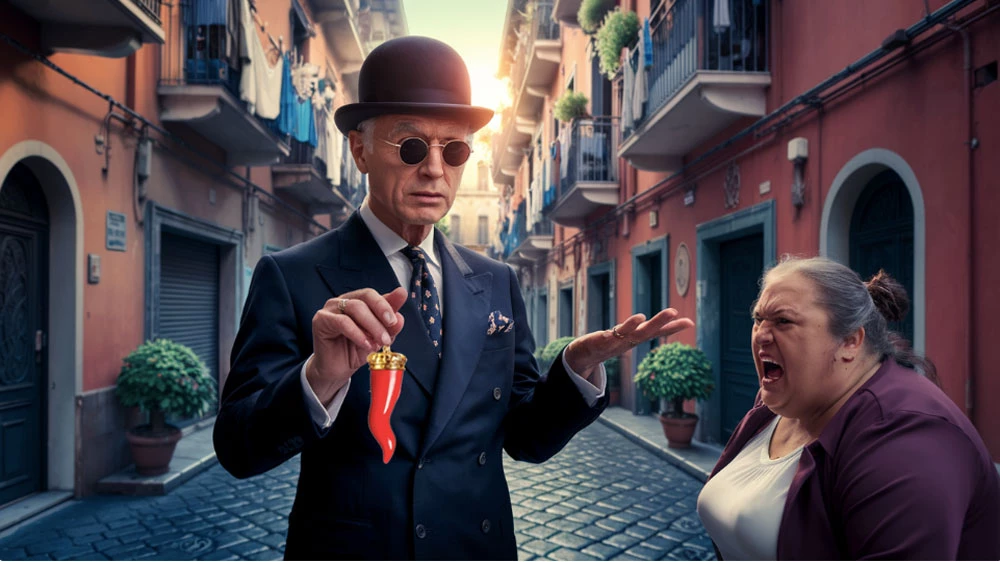Have you ever spotted that twisted little horn dangling from a necklace or hanging from a rearview mirror and wondered, “What’s the story behind that?” I remember seeing my Italian-American neighbor, Mr. Rossi, touch his tiny gold horn before every big life moment—job interviews, hospital visits, even pizza night—and it sparked my curiosity. Why would a simple charm hold such power? Turns out, this unassuming symbol carries centuries of secret meaning, and today we’re unlocking why it’s still a cultural superstar.
The Meaning of the Italian Horn

The Cornicello is a spiritual shield against negativity in Italian folklore. You’ll hear it called the cornicello (Italian for “little horn”), corno, or cornetto. This curved amulet, shaped like a twisted pepper or mythical unicorn horn, primarily battles the evil eye—or malocchio—a curse born from envy. Just imagine someone giving you a side-eye so nasty it could wilt flowers; the cornicello deflects that bad juju! Beyond warding off malocchio, it symbolizes prosperity, renewal, and fertility. When my nonna gifted me one before college, she whispered, “This isn’t jewelry—it’s your armor.” Today, artists like Eredi Jovon craft horns specifically to channel this protective energy. Fun fact: In Naples, you’ll spot bright red horn charms everywhere—from keychains to espresso cup handles!
“The cornicello isn’t just tradition; it’s breathing history,” says Naples-born jeweler Marco Bellucci. “Each curve holds a prayer.”
The History and Origins of the Cornicello

Ancient Neapolitan people used horn-shaped charms as early as pre-Roman times to honor sacred animals. Before Christianity took root, Italian tribes worshipped animals with powerful horns—like bulls and goats—seeing them as vessels of divine strength. Some historians, like those at Tivoli Jewelers, believe the curve mirrors the crescent moon, linking to fertility goddesses. During the Middle Ages, the Neapolitan people popularized it as a defense against plague and misfortune. Picture street markets in 1400s Naples crowded with folks haggling over coral horns! The design evolved from rough clay to delicate gold, but its soul stayed the same: a lifeline against chaos. Fun parallel? Similar horns appear across the Mediterranean, but the Italian version uniquely blends pagan roots with Catholic symbolism—like turning a cornucopia of protection.
How Italian Horns Are Used Today
Modern wearers integrate cornicelli into daily life far beyond necklaces. Yes, the Italian horn pendant meaning shines on chains (my cousin never takes his off!), but you’ll also find them:
- As car charms—especially in Italian neighborhoods like NYC’s Little Italy
- Hanging above doorways in homes for whole-family protection
- Stitched into soccer jerseys by Serie A players (see Napoli FC’s horn-laden jerseys!)
Unlike niche traditions, anyone can wear one—it’s about belief, not bloodline. My best friend Lena (who’s Korean-American) rocks a silver cornicello daily. “It’s my reminder to stand strong,” she says. Generationally, teens often choose minimalist silver designs, while elders favor bold red coral—a nod to Southern Italy’s coastal roots. And contrary to stereotypes? Guys wear them just as proudly as women; Italian heartthrobs like soccer star Lorenzo Insigne flaunt horn chains.
Materials and Their Significance
Gold, silver, and coral versions carry nuanced meanings in traditional belief. Here’s how material changes the game:
| Material | Meaning | Cultural Insight |
|---|---|---|
| Yellow Gold | Wealth attraction & ancestral pride | Favored by older generations; common in family heirlooms |
| Silver | Modern protection & everyday resilience | Popular with young adults; believed to “reset” negative energy |
| Red Coral | Ultimate malocchio defense; ties to Naples | Rare—tradition says only Sicilian divers could harvest it safely! |
According to Luvente artisans, coral horns draw extra power because the red color mimics lifeblood—making it a “living” shield. But here’s the kicker: modern jewelers confirm any material works if you believe! My horn? Silver, because it matches my skateboard jewelry aesthetic.
Superstitions, Etiquette & Taboos
Buying your own Italian horn sparks debate in old-school Italian communities. Traditionalists claim self-purchased horns lack potency because they miss the giver’s loving intention—like getting a birthday cake nobody sang “Happy Birthday” over. My Calabrian friend Rosa won’t even look at horn displays in stores, whispering, “Bad luck sticks like gum!” But contemporary studios like DelBrenna push back: “Your belief powers it,” their site states. “If you buy it with faith, it works.” Key etiquette rules:
- Never touch someone else’s horn without asking (it breaks the protective field!)
- If it breaks, replace it immediately—it “sacrificed itself” for you
- Gift it with a hug: The embrace transfers positive energy
When my brother bought himself one during a rough patch? His horn snapped weeks later… then he aced his driver’s test. Coincidence? Nah—he says it worked perfectly.
FAQ Section: Italian Horn Meaning FAQ
What does the Italian horn mean?
The Cornicello embodies protection, strength, and ancestral connection in Italian culture. It’s less about literal horns and more about channeling ancient resilience—like wearing your great-grandma’s courage around your neck.
What does the Italian horn protect you from?
Malocchio (the evil eye) is the primary threat the cornicello deflects. Think envy-induced bad luck: failed exams, car troubles, or sudden rain on picnic day. Some believe it also shields against physical harm during travel—hence those car charm sightings!
Is it bad luck to buy yourself an Italian horn?
Old superstitions warn self-purchased horns lose power, but modern practice says belief overrides rules. If your heart’s in it? Go for it! Jewelry sites like The Italian Jewelry Company note 70% of buyers now gift to themselves.
Can anyone wear an Italian horn?
Yes—this symbol transcends ethnicity through shared human need for protection. Like yoga or tacos, cultural exchange keeps traditions alive. Just respect its roots: Don’t wear it as a “trendy” nose ring!
What does gifting an Italian horn pendant mean?
Gifting a horn pledgeds lifelong guardianship over the recipient’s wellbeing. It’s deeper than “thoughtful present”—it’s saying, “I’ve got your back against the world’s bad vibes.” No wonder Nonna eyes me suspiciously when I forget birthdays!
The Italian Horn in Modern Culture
From sneakers to pop stars, cornicelli dominate 21st-century cool. Rapper Drake wore a massive gold horn chain during his 2022 tour, sparking a teen buying frenzy. Italian brands like Gucci plaster horns on $1,200 loafers, while Etsy artisans sell vegan-leather horn keychains. But the real magic? How immigrants keep it real: At Boston’s Feast of Saint Anthony, toddlers get blessed with miniature horns. Even TikTok dances incorporate “horn touches” for good luck—proving this ancient symbol isn’t fossilized. It’s resilience you can actually wear, whether you’re a soccer mom or a metalhead.
How to Choose and Care for Your Italian Horn Necklace
Authentic horns require craftsmanship honoring Neapolitan traditions. Follow these tips to honor the symbol:
- Feel the curve: Real horns have asymmetrical twists (mass-produced ones look robotic)
- Ask about origins: Reputable sellers like Eredi Jovon detail their artisan process
- Clean gently: Dip silver horns in lemon juice; never polish coral (it strips energy!)
Pro trick from my gemologist aunt: Sleep with your horn under your pillow for three nights when new. “It syncs with your heartbeat,” she insists. And if you’re gifting one? Pair it with a handwritten note—”Your protection starts now” works wonders. Remember: Whether gold, silver, or even plastic, a horn worn with intention is never “just jewelry.” It’s a whisper from ancestors saying, “You’re protected, always.”

